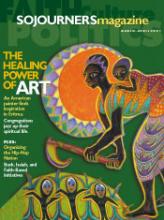John Lennon tried to kill the Beatles way back in 1970. It’s right there in the lyrics on his first solo album: "I don’t believe in Beatles...the dream is over." And so it is, but the Beatles refuse to die. They’ve lived on for three decades now as an exceptionally durable, and valuable, brand name. The albums have stayed in print, and, once a decade or so, some new product is cranked out to excite again the market for all things mop-top. And so we have 1, the compilation of the 27 Beatles songs to reach the titular position on either the U.S. or UK charts.
This collection has no reason to exist, except as a shameless exploitation of the Lennon-McCartney catalog, and as an ancillary product to The Beatles Anthology, a big coffee table book also released for the Christmas 2000 market. All of the songs on 1 are available on the comprehensive Red and Blue collections that were issued ages ago. But that didn’t keep 1 from topping the Billboard album charts in the shopping weeks before Christmas.
It’s true that the market for the Beatles’ work persists in large part because it’s great work. It stands alongside the achievements of Elvis, Bo Diddley, James Brown, and perhaps a dozen others as part of the legacy every up-and-coming rocker needs to chew up and digest. And young people discovering the Beatles for the first time have always been a big share of their afterlife market. But a collection of Number Ones is hardly the best way to approach the Beatles legacy. For instance, Revolver, issued in 1966, is the Beatles album I think has held up the best over the years, but on 1 it is represented only by "Eleanor Rigby," admittedly a beautiful song, and its flip-side, "Yellow Submarine." The 1 concept has the effect of forcing the Beatles 1960s countercultural aesthetic into the bottom-line terms of today’s culture where the only thing that counts is what sells.
Read the Full Article
